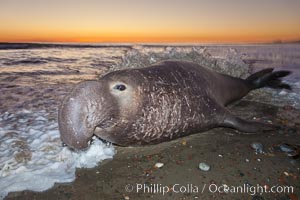
California sea lions bodysurfing and leaping out of the water, in La Jolla at Boomer Beach.
Location: La Jolla, California
Image ID: 38988
Location: La Jolla, California
Image ID: 38988

Pacific harbor seal in shallow water, on sand at the edge of the sea.
Species: Pacific harbor seal, Phoca vitulina richardsi
Location: La Jolla, California
Image ID: 26315
Species: Pacific harbor seal, Phoca vitulina richardsi
Location: La Jolla, California
Image ID: 26315

Water falling from the fluke (tail) of a humpback whale as the whale dives to forage for food in the Santa Barbara Channel.
Species: Humpback whale, Megaptera novaeangliae
Location: Santa Rosa Island, California
Image ID: 27029
Species: Humpback whale, Megaptera novaeangliae
Location: Santa Rosa Island, California
Image ID: 27029

Blue whale, swimming through the open ocean.
Species: Blue whale, Balaenoptera musculus
Location: La Jolla, California
Image ID: 21248
Species: Blue whale, Balaenoptera musculus
Location: La Jolla, California
Image ID: 21248

Blue whale. The sleek hydrodynamic shape of the enormous blue whale allows it to swim swiftly through the ocean, at times over one hundred miles in a single day.
Species: Blue whale, Balaenoptera musculus
Location: La Jolla, California
Image ID: 21250
Species: Blue whale, Balaenoptera musculus
Location: La Jolla, California
Image ID: 21250

Aerial photo of blue whale near San Diego. This enormous blue whale glides at the surface of the ocean, resting and breathing before it dives to feed on subsurface krill.
Species: Blue whale, Balaenoptera musculus
Location: San Diego, California
Image ID: 39422
Species: Blue whale, Balaenoptera musculus
Location: San Diego, California
Image ID: 39422

White southern right whale calf underwater, Eubalaena australis. About five per cent of southern right whales are born white due to a condition known as grey morphism and will gradually turn dark as they age. They are not albino (which is a complete lack of pigmentation). Sometimes referred to as "brindled", the white coloration is a recessive genetic trait and only lasts a few months. Typically, but not always, white calves will become much darker as they mature but will still be somewhat lighter than normal even as adults.
Species: Southern Right Whale, Eubalaena australis
Location: Puerto Piramides, Chubut, Argentina
Image ID: 38279
Species: Southern Right Whale, Eubalaena australis
Location: Puerto Piramides, Chubut, Argentina
Image ID: 38279

Rostrum and callosities of southern right whale, Eubalaena australis. Whale lice can be seen attached to the collosities, which are patches of thickened keratinized tissue, like calluses (thus the name). The pattern of callosities on a right whale are unique and serve as a way to identify individuals throughout their lifetime.
Species: Southern Right Whale, Eubalaena australis
Location: Puerto Piramides, Chubut, Argentina
Image ID: 38450
Species: Southern Right Whale, Eubalaena australis
Location: Puerto Piramides, Chubut, Argentina
Image ID: 38450
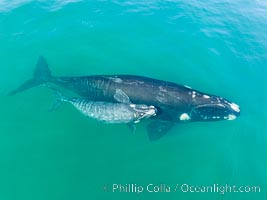
Southern right whale mother and calf, aerial photo, Eubalaena australis.
Species: Southern Right Whale, Eubalaena australis
Location: Puerto Piramides, Chubut, Argentina
Image ID: 38350
Species: Southern Right Whale, Eubalaena australis
Location: Puerto Piramides, Chubut, Argentina
Image ID: 38350

One of the male lions of the River Pride, Mara Triangle, Kenya.
Species: African lion, Panthera leo
Location: Mara North Conservancy, Kenya
Image ID: 39704
Panorama dimensions: 5760 x 8640
Species: African lion, Panthera leo
Location: Mara North Conservancy, Kenya
Image ID: 39704
Panorama dimensions: 5760 x 8640

Portrait of Two Sibling Lions of the River Pride, Mara North Conservancy, Kenya.
Species: African lion, Panthera leo
Location: Mara North Conservancy, Kenya
Image ID: 39729
Panorama dimensions: 5400 x 8640
Species: African lion, Panthera leo
Location: Mara North Conservancy, Kenya
Image ID: 39729
Panorama dimensions: 5400 x 8640
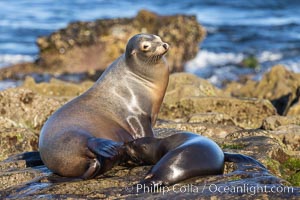
California Sea Lions, Mother nursing her pup.
Species: California sea lion, Zalophus californianus
Location: La Jolla, California
Image ID: 36861
Species: California sea lion, Zalophus californianus
Location: La Jolla, California
Image ID: 36861

California sea lion bodysurfing Boomer Beach in La Jolla.
Species: California sea lion, Zalophus californianus
Location: La Jolla, California
Image ID: 38943
Species: California sea lion, Zalophus californianus
Location: La Jolla, California
Image ID: 38943

Newborn harbor seal pup watches a Western seagull approach. The gull is trying to pick at placenta on the sandy beach as the seal pup, born just moments before, watches and tries to understand what is going on. Within an hour of being born, this pup had learned to nurse and had entered the ocean for its first swim.
Species: Pacific harbor seal, Phoca vitulina richardsi
Location: La Jolla, California
Image ID: 39076
Species: Pacific harbor seal, Phoca vitulina richardsi
Location: La Jolla, California
Image ID: 39076
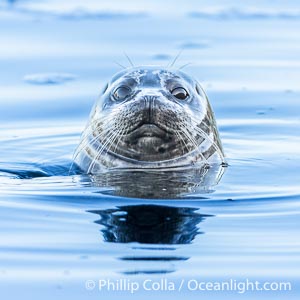
Pacific Harbor Seal spyhopping, La Jolla.
Species: Pacific harbor seal, Phoca vitulina richardsi
Location: La Jolla, California
Image ID: 39365
Species: Pacific harbor seal, Phoca vitulina richardsi
Location: La Jolla, California
Image ID: 39365

California Sea Lion mother with her pup, La Jolla, California.
Species: California sea lion, Zalophus californianus
Location: La Jolla, California
Image ID: 36570
Species: California sea lion, Zalophus californianus
Location: La Jolla, California
Image ID: 36570

California Sea Lion pup playing on top of its resting mother, La Jolla, California.
Species: California sea lion, Zalophus californianus
Location: La Jolla, California
Image ID: 36580
Species: California sea lion, Zalophus californianus
Location: La Jolla, California
Image ID: 36580

California sea lion wounded from entanglement in fishing line, La Jolla.
Species: California sea lion, Zalophus californianus
Location: La Jolla, California
Image ID: 35156
Species: California sea lion, Zalophus californianus
Location: La Jolla, California
Image ID: 35156
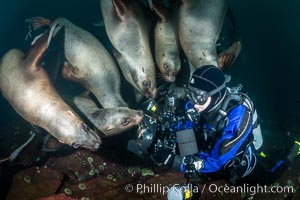
Photographer Celia Kujala and Steller Sea Lions Underwater, underwater photographer, Hornby Island, British Columbia, Canada.
Species: Steller sea lion, Eumetopias jubatus
Location: Norris Rocks, Hornby Island, British Columbia, Canada
Image ID: 36129
Species: Steller sea lion, Eumetopias jubatus
Location: Norris Rocks, Hornby Island, British Columbia, Canada
Image ID: 36129
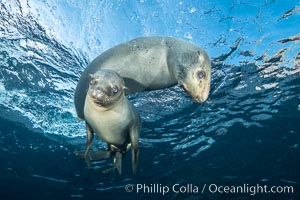
California sea lions underwater, Coronados Islands, Baja California, Mexico.
Species: California sea lion, Zalophus californianus
Location: Coronado Islands (Islas Coronado), Baja California, Mexico
Image ID: 34575
Species: California sea lion, Zalophus californianus
Location: Coronado Islands (Islas Coronado), Baja California, Mexico
Image ID: 34575

California sea lion, Coronados Islands, Baja California, Mexico.
Species: California sea lion, Zalophus californianus
Location: Coronado Islands (Islas Coronado), Baja California, Mexico
Image ID: 34576
Species: California sea lion, Zalophus californianus
Location: Coronado Islands (Islas Coronado), Baja California, Mexico
Image ID: 34576

California sea lion with strange eyes, Coronados Islands, Baja California, Mexico.
Species: California sea lion, Zalophus californianus
Location: Coronado Islands (Islas Coronado), Baja California, Mexico
Image ID: 35052
Species: California sea lion, Zalophus californianus
Location: Coronado Islands (Islas Coronado), Baja California, Mexico
Image ID: 35052

Southern right whale underwater, Eubalaena australis, Argentina.
Species: Southern right whale, Eubalaena australis
Location: Puerto Piramides, Chubut, Argentina
Image ID: 35907
Species: Southern right whale, Eubalaena australis
Location: Puerto Piramides, Chubut, Argentina
Image ID: 35907

Southern right whale underwater, Eubalaena australis, Argentina.
Species: Southern right whale, Eubalaena australis
Location: Puerto Piramides, Chubut, Argentina
Image ID: 35917
Species: Southern right whale, Eubalaena australis
Location: Puerto Piramides, Chubut, Argentina
Image ID: 35917

Mating pair of southern right whales underwater (on left), Eubalaena australis, Argentina.
Species: Southern Right Whale, Eubalaena australis
Location: Puerto Piramides, Chubut, Argentina
Image ID: 35923
Species: Southern Right Whale, Eubalaena australis
Location: Puerto Piramides, Chubut, Argentina
Image ID: 35923

Inquisitive southern right whale underwater, Eubalaena australis, closely approaches cameraman, Argentina.
Species: Southern right whale, Eubalaena australis
Location: Puerto Piramides, Chubut, Argentina
Image ID: 35942
Species: Southern right whale, Eubalaena australis
Location: Puerto Piramides, Chubut, Argentina
Image ID: 35942

Inquisitive southern right whale underwater, Eubalaena australis, closely approaches cameraman, Argentina.
Species: Southern right whale, Eubalaena australis
Location: Puerto Piramides, Chubut, Argentina
Image ID: 35943
Species: Southern right whale, Eubalaena australis
Location: Puerto Piramides, Chubut, Argentina
Image ID: 35943

Steller sea lion underwater, Norris Rocks, Hornby Island, British Columbia, Canada.
Species: Steller sea lion, Eumetopias jubatus
Location: Hornby Island, British Columbia
Image ID: 36054
Species: Steller sea lion, Eumetopias jubatus
Location: Hornby Island, British Columbia
Image ID: 36054

Steller sea lion underwater, Norris Rocks, Hornby Island, British Columbia, Canada.
Species: Steller sea lion, Eumetopias jubatus
Location: Hornby Island, British Columbia
Image ID: 36055
Species: Steller sea lion, Eumetopias jubatus
Location: Hornby Island, British Columbia
Image ID: 36055
